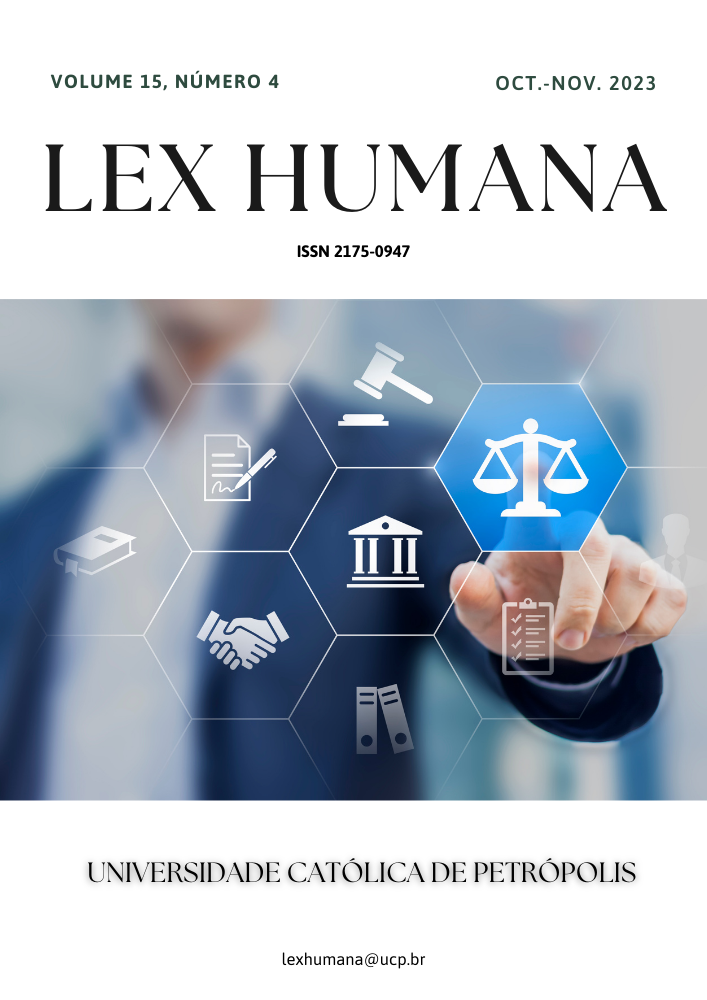Resumo
Este artigo investiga a intrincada relação entre anúncios, leis de mídia e sociedade no contexto da Índia. À medida que a publicidade indiana e o cenário da mídia continuam a evoluir, a compreensão dos aspectos sócio-legais desses domínios torna-se crucial para os formuladores de políticas, empresas e cidadãos. Esta exploração visa lançar luz sobre a interação entre os três componentes principais e suas implicações mais amplas para o tecido social da Índia. Examina o papel dos anúncios na formação do comportamento do consumidor e das normas sociais. Analisa a influência dos anúncios nas percepções, desejos e aspirações da população indiana, explorando como essas mensagens promocionais impactam os valores culturais e a identidade. O estudo também aborda preocupações relacionadas à ética da publicidade, examinando casos de alegações enganosas, conteúdo ofensivo e suas repercussões no sentimento público. A interação entre anúncios, leis de mídia e sociedade na Índia é um campo de estudo complexo e em evolução. Ele defende uma abordagem equilibrada que alinhe os interesses das empresas, reguladores e da população indiana para criar um ambiente de mídia e publicidade inclusivo e responsável.
Referências
Singh, Lavayana. “ROLE OF MEDIA IN MAKING AND EXECUTION OF PUBLIC POLICY IN INDIA.” The Indian Journal of Political Science, vol. 74, no. 2, 2013, pp. 309–12. JSTOR, http://www.jstor.org/stable/24701115. Accessed 20 January 2023.
Prabhash, J. “MEDIATED RIGHTS : MEDIA, WOMEN AND HUMAN RIGHTS IN INDIA.” The Indian Journal of Political Science, vol. 66, no. 1, 2005, pp. 53–74. JSTOR, http://www.jstor.org/stable/41856112. Accessed 02 March 2023.
Dhavan, Rajeev. “ON THE LAW OF THE PRESS IN INDIA.” Journal of the Indian Law Institute, vol. 26, no. 3, 1984, pp. 288–332. JSTOR, http://www.jstor.org/stable/43953869. Accessed 24 January 2023.
Gaur, K. D. “CONSTITUTIONAL RIGHTS AND FREEDOM OF MEDIA IN INDIA.” Journal of the Indian Law Institute, vol. 36, no. 4, 1994, pp. 429–54. JSTOR, http://www.jstor.org/stable/43952367. Accessed 24 July 2023.
Dr. Sukanta Nanda, Media Law, 2nd Edition, Central Law Publications, 2021.
Rai, Bina. “ROLE OF MEDIA IN INDIAN DEMOCRATIC SYSTEM.” The Indian Journal of Political Science, vol. 76, no. 3, 2015, pp. 437–41. JSTOR, https://www.jstor.org/stable/26534863. Accessed 23 April 2023.
Verghese, B. G. “The Media in a Free Society: Proposals for Restructuring.” Economic and Political Weekly, vol. 12, no. 18, 1977, pp. 731–40. JSTOR, http://www.jstor.org/stable/4365545. Accessed 20 July 2023.
Rudolph, Lloyd I. “The Media and Cultural Politics.” Economic and Political Weekly, vol. 27, no. 28, 1992, pp. 1489–96. JSTOR, http://www.jstor.org/stable/4398634. Accessed 16 April 2023.
Aveek Sarkar v. State of W.B., (2014) 4 S.C.C 257, (India)
Rast v. Van Deman & Lewis Co., (1916) 240 U.S. 342
Roth v. United States (1957) [354 U.S. 476]
R. v. Hicklin, (1868) [LR 3 QB 360]
F.A. Picture International v. Central Board of Film Certification [AIR 2005 Bom 145] (India)
Tripp, Carolyn, et al. “The Effects of Multiple Product Endorsements by Celebrities on Consumers’ Attitudes and Intentions.” Journal of Consumer Research, vol. 20, no. 4, 1994, pp. 535–47. JSTOR, http://www.jstor.org/stable/2489757. Accessed 16 April 2023.
Edell, Julie A., and Marian Chapman Burke. “The Power of Feelings in Understanding Advertising Effects.” Journal of Consumer Research, vol. 14, no. 3, 1987, pp. 421–33. JSTOR, http://www.jstor.org/stable/2489502. Accessed 20 July 2023.
Sillars, A., & Vangelisti, A. (2006). Communication: Basic Properties and Their Relevance to Relationship Research. In A. Vangelisti & D. Perlman (Eds.), The Cambridge Handbook of Personal Relationships (Cambridge Handbooks in Psychology, pp. 331-352). Cambridge: Cambridge University Press. doi:10.1017/CBO9780511606632.019
MAZZARELLA, WILLIAM. “Indian Fun: Constructing ‘the Indian Consumer’ I.” Shoveling Smoke: Advertising and Globalization in Contemporary India, Duke University Press, 2003, pp. 215–49. JSTOR, https://doi.org/10.2307/j.ctv11smx0k.11. Accessed 08 February 2023.
Jeffrey, Robin. “Advertising and Indian-Language Newspapers: How Capitalism Supports (Certain) Cultures and (Some) States, 1947-96.” Pacific Affairs, vol. 70, no. 1, 1997, pp. 57–84. JSTOR, https://doi.org/10.2307/2761228. Accessed 20 March 2023.
Dean, Dwane Hal. “Brand Endorsement, Popularity, and Event Sponsorship as Advertising Cues Affecting Consumer Pre-Purchase Attitudes.” Journal of Advertising, vol. 28, no. 3, 1999, pp. 1–12. JSTOR, http://www.jstor.org/stable/4189113. Accessed 19 March 2023.

Este trabalho está licenciado sob uma licença Creative Commons Attribution-NonCommercial-NoDerivatives 4.0 International License.
Copyright (c) 2023 Lex Humana (ISSN 2175-0947)

